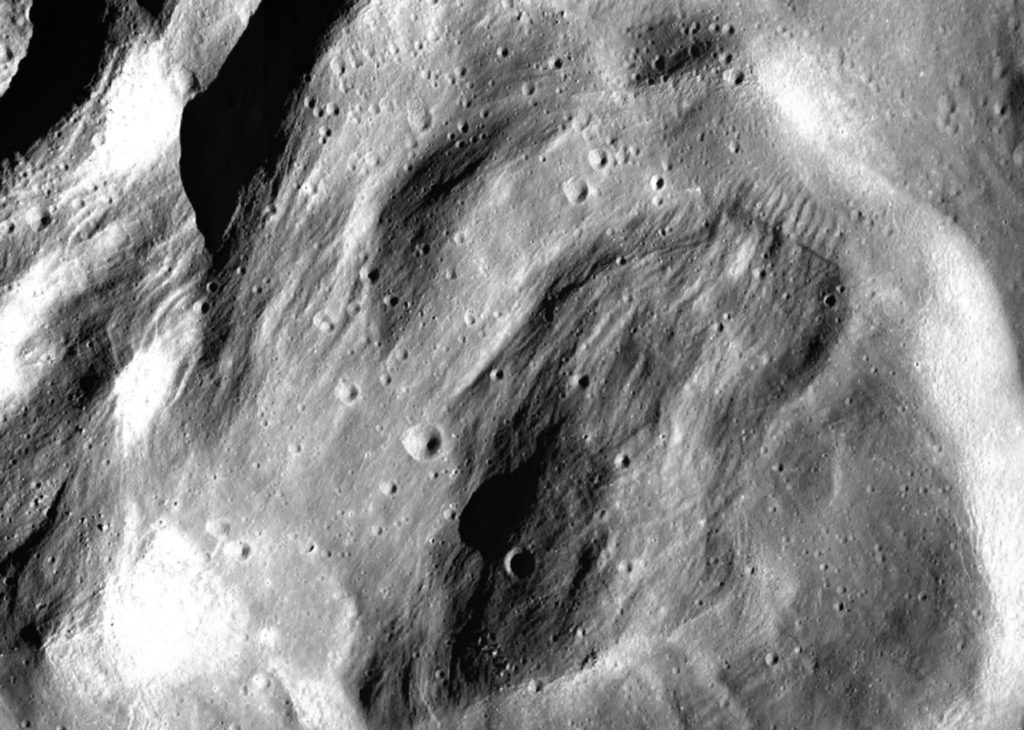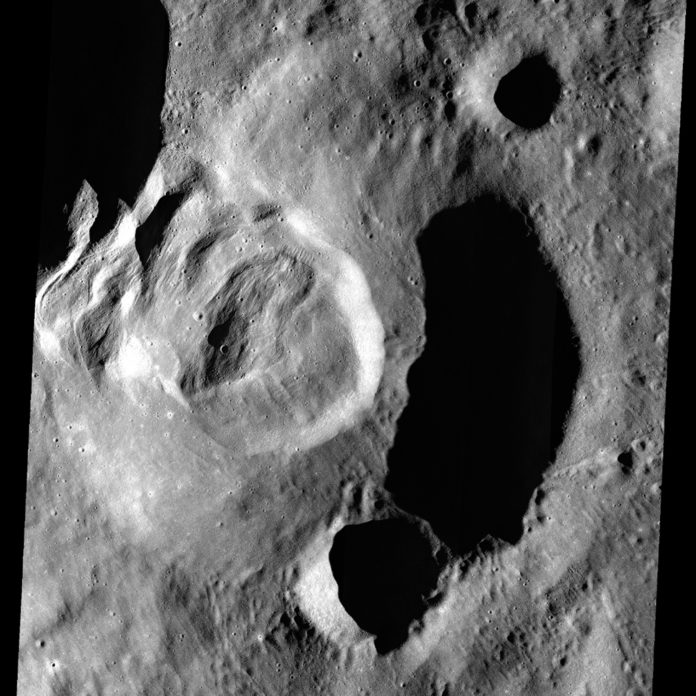The Klute crate on the moon’s far side is a heavily worn crater with multiple smaller craters along the outer rim. The wall of Klute Crater meets Klute W Crater, impacted to the northwest of Klute.
The wall of Klute W Crater slumped and fallen towards the crater floor, prompting a nearby moonquake or surface impact event. In history, this geological process is known as mass wasting.
The material becomes loose after the degradation and erosion of the lunar surface over the long run. When this surface moving event occurs, the unstable debris was influenced by gravity and began to move down the crater’s sides.

The event was observed using the Lunar Reconnaissance Orbiter Camera (LROC).
Here, mass wasting is shown as large-scale slumping, instead of a series of smaller individual slides, as found on Shubert A crater. We see equal layers of debris squeezed together as the crater wall drooped to the bottom.
